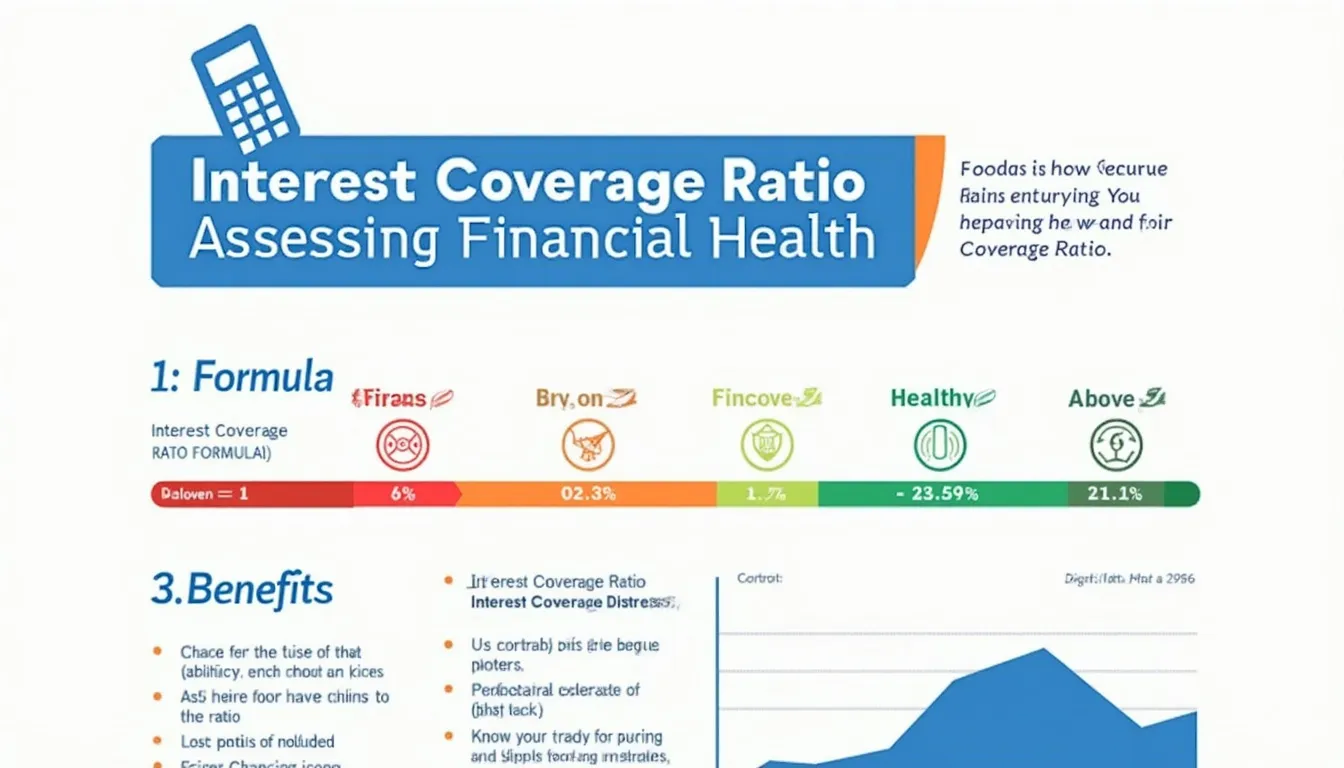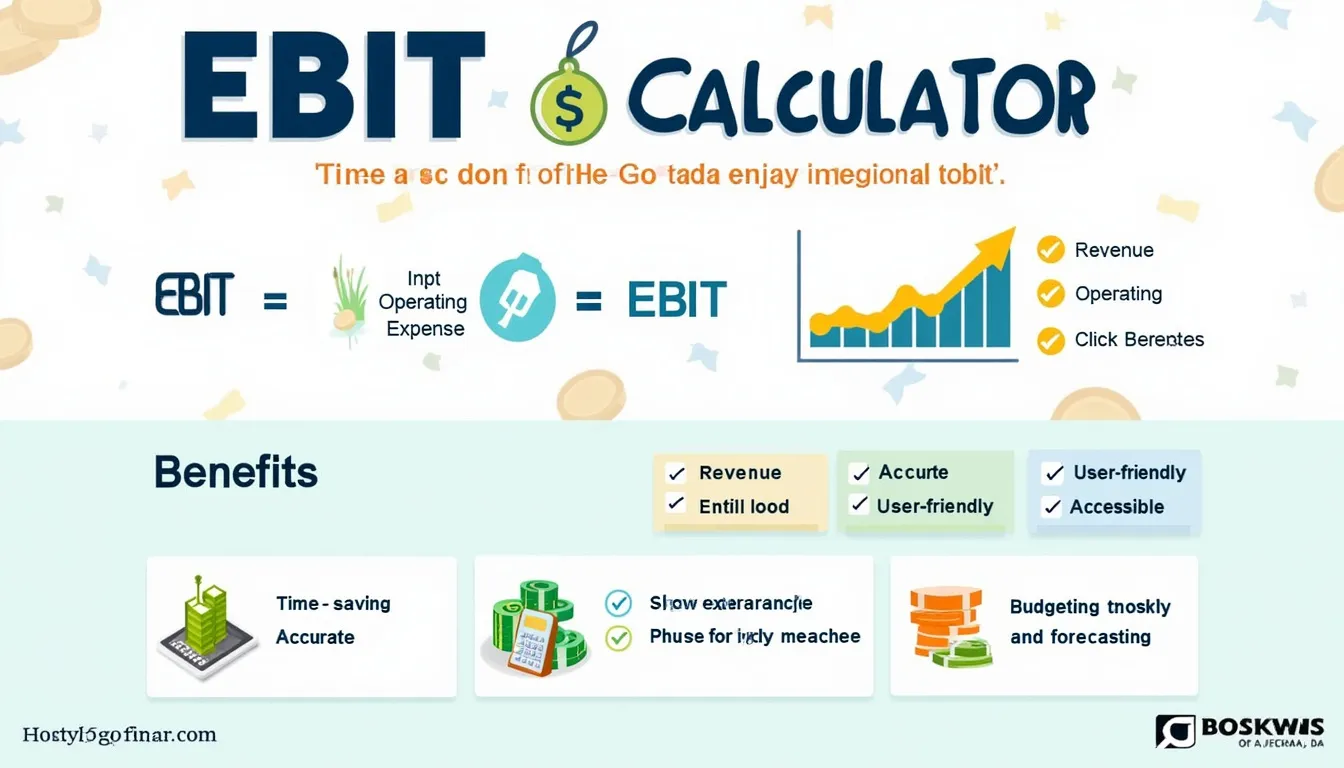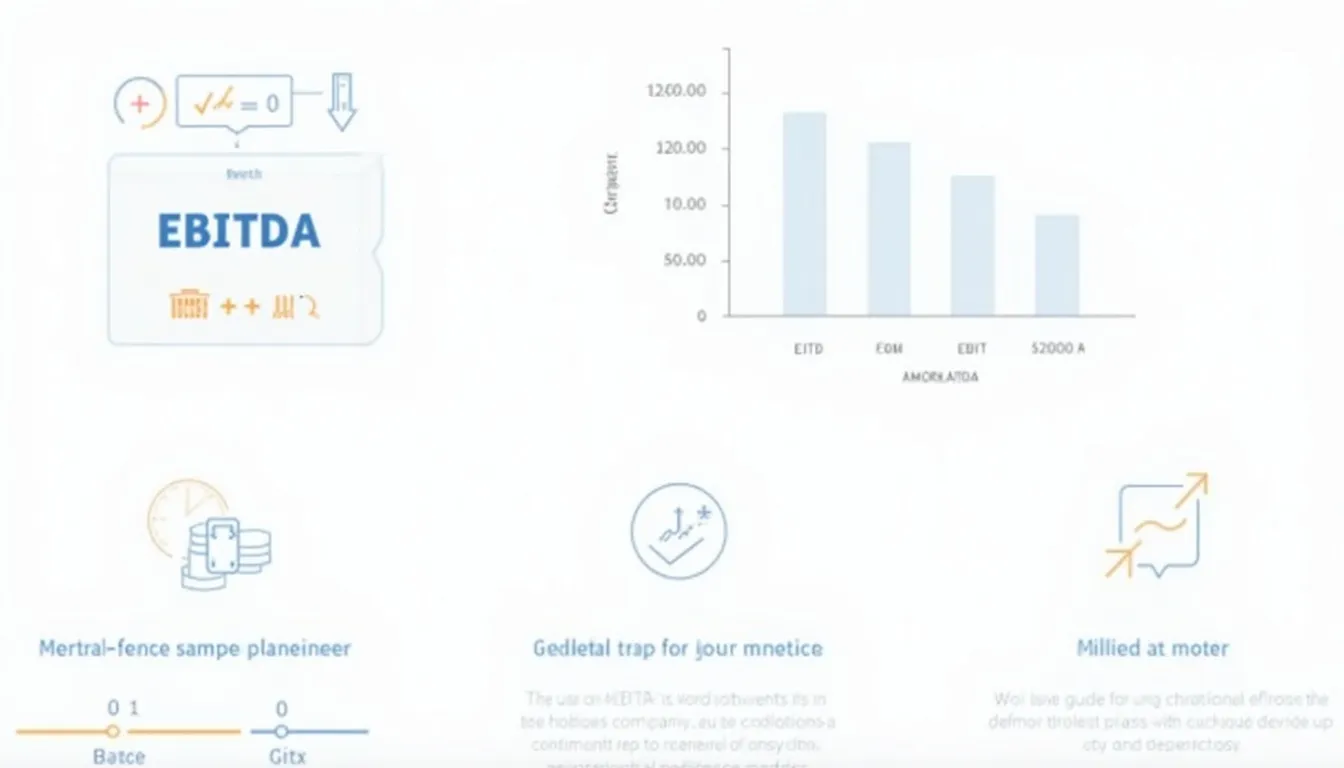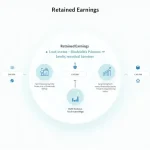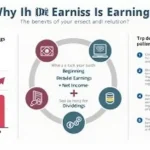Interest Coverage Ratio Calculator
Is this tool helpful?
Welcome to our comprehensive guide on the Interest Coverage Ratio Calculator. This powerful tool is designed to help businesses, investors, and financial analysts evaluate a company’s ability to meet its interest obligations. In this article, we’ll explore how to use the calculator effectively, understand its importance, and interpret the results to make informed financial decisions.
How to Use the Interest Coverage Ratio Calculator
Our Interest Coverage Ratio Calculator is user-friendly and straightforward. Follow these steps to calculate your company’s interest coverage ratio:
- Enter the total revenue for the period in USD.
- Input the cost of goods and services for the period in USD.
- Provide the operating expenses for the period in USD.
- Enter the interest expense for the period in USD.
- Click the “Calculate” button to generate the results.
The calculator will then display two key results:
- Earnings Before Interest and Taxes (EBIT)
- Interest Coverage Ratio
Understanding the Interest Coverage Ratio
The Interest Coverage Ratio, also known as the Times Interest Earned Ratio, is a crucial financial metric that measures a company’s ability to pay its interest expenses on outstanding debt. It provides insight into the company’s financial health and its capacity to meet its debt obligations.
The formula for calculating the Interest Coverage Ratio is:
$$ \text{Interest Coverage Ratio} = \frac{\text{Earnings Before Interest and Taxes (EBIT)}}{\text{Interest Expense}} $$Where:
$$ \text{EBIT} = \text{Revenue} – \text{Cost of Goods and Services} – \text{Operating Expenses} $$Benefits of Using the Interest Coverage Ratio Calculator
Our Interest Coverage Ratio Calculator offers numerous advantages for businesses, investors, and financial professionals:
- Quick and Accurate Results: Obtain precise calculations in seconds, saving time and reducing the risk of manual errors.
- Financial Health Assessment: Gain valuable insights into a company’s ability to meet its debt obligations.
- Investor Decision-Making: Help investors evaluate the risk associated with a company’s debt levels.
- Benchmarking: Compare a company’s interest coverage ratio with industry standards or competitors.
- Trend Analysis: Track changes in the ratio over time to identify financial trends and potential issues.
- Loan Evaluation: Assist lenders in assessing a company’s creditworthiness for potential loans.
Addressing User Needs and Solving Problems
The Interest Coverage Ratio Calculator addresses several key user needs and solves specific problems in financial analysis:
1. Assessing Financial Stability
For investors and creditors, understanding a company’s ability to meet its interest obligations is crucial. The Interest Coverage Ratio provides a clear indicator of financial stability. A higher ratio suggests that the company has a greater ability to cover its interest expenses, indicating lower financial risk.
Example Calculation:
Let’s consider a company with the following financial data:
- Revenue: $10,000,000
- Cost of Goods and Services: $6,000,000
- Operating Expenses: $2,500,000
- Interest Expense: $500,000
Using our calculator:
EBIT = $10,000,000 – $6,000,000 – $2,500,000 = $1,500,000
Interest Coverage Ratio = $1,500,000 / $500,000 = 3
This result indicates that the company’s earnings before interest and taxes are three times its interest expenses, suggesting a relatively stable financial position.
2. Identifying Potential Financial Distress
A low interest coverage ratio can be an early warning sign of financial distress. Our calculator helps users quickly identify when a company’s ability to meet its interest obligations may be at risk.
Example Calculation:
Consider a company with the following data:
- Revenue: $5,000,000
- Cost of Goods and Services: $3,500,000
- Operating Expenses: $1,200,000
- Interest Expense: $400,000
Using our calculator:
EBIT = $5,000,000 – $3,500,000 – $1,200,000 = $300,000
Interest Coverage Ratio = $300,000 / $400,000 = 0.75
This result indicates that the company’s earnings before interest and taxes are only 0.75 times its interest expenses, suggesting potential financial distress and difficulty in meeting interest obligations.
3. Facilitating Comparative Analysis
Our calculator enables users to quickly compare the interest coverage ratios of different companies or industry benchmarks, facilitating informed decision-making for investors and analysts.
Practical Applications of the Interest Coverage Ratio Calculator
The Interest Coverage Ratio Calculator has numerous practical applications across various financial scenarios:
1. Investment Decision-Making
Investors can use the calculator to assess the financial health of potential investments. By comparing the interest coverage ratios of different companies within the same industry, investors can make more informed decisions about which stocks or bonds to include in their portfolios.
2. Credit Risk Assessment
Lenders and credit analysts can utilize the calculator to evaluate a company’s creditworthiness. A higher interest coverage ratio generally indicates a lower credit risk, which may lead to more favorable lending terms or credit ratings.
3. Corporate Financial Planning
Financial managers can use the calculator to monitor their company’s financial health and plan for future debt obligations. By tracking the interest coverage ratio over time, they can make informed decisions about taking on additional debt or implementing cost-cutting measures to improve the ratio.
4. Merger and Acquisition Analysis
During mergers and acquisitions, the Interest Coverage Ratio Calculator can be used to assess the financial stability of target companies. This information can be crucial in determining the viability and potential risks associated with an acquisition.
5. Industry Benchmarking
Analysts can use the calculator to compare a company’s interest coverage ratio with industry averages or competitors. This benchmarking can provide valuable insights into a company’s relative financial strength within its sector.
Frequently Asked Questions (FAQ)
1. What is a good interest coverage ratio?
Generally, an interest coverage ratio of 2 or higher is considered acceptable. However, what constitutes a “good” ratio can vary by industry. A ratio above 3 is typically viewed as healthy, while a ratio below 1.5 may indicate potential financial distress.
2. Can the interest coverage ratio be negative?
Yes, the interest coverage ratio can be negative if a company’s EBIT is negative. This situation indicates that the company is not generating enough operating profit to cover its interest expenses, which is a significant red flag for financial health.
3. How often should I calculate the interest coverage ratio?
It’s advisable to calculate the interest coverage ratio on a quarterly or annual basis, aligning with financial reporting periods. Regular calculation allows for trend analysis and early detection of potential financial issues.
4. Is a higher interest coverage ratio always better?
While a higher ratio generally indicates better financial health, an extremely high ratio might suggest that a company is not leveraging its debt effectively or missing growth opportunities. It’s important to consider the ratio in context with other financial metrics and industry norms.
5. How does the interest coverage ratio differ from the debt service coverage ratio?
The interest coverage ratio focuses solely on a company’s ability to pay interest expenses, while the debt service coverage ratio includes both interest and principal payments in its calculation. The debt service coverage ratio provides a more comprehensive view of a company’s ability to meet all its debt obligations.
6. Can I use the interest coverage ratio for personal finance?
While the interest coverage ratio is primarily used for businesses, a similar concept can be applied to personal finance. Individuals can calculate a personal interest coverage ratio by dividing their income before taxes and interest payments by their total interest expenses. This can help assess personal financial health and debt management capacity.
7. How does inflation affect the interest coverage ratio?
Inflation can indirectly affect the interest coverage ratio by impacting a company’s revenues, costs, and interest expenses. During periods of high inflation, companies may see increased revenues but also higher costs, which can affect EBIT. Additionally, if interest rates rise in response to inflation, interest expenses may increase, potentially lowering the interest coverage ratio.
8. Are there any limitations to using the interest coverage ratio?
Yes, there are some limitations to consider:
- It doesn’t account for principal payments on debt
- It doesn’t consider the timing of interest payments
- It may not be suitable for companies with highly variable earnings
- It doesn’t account for non-cash expenses like depreciation
9. How does the interest coverage ratio relate to a company’s credit rating?
Credit rating agencies often consider the interest coverage ratio when assessing a company’s creditworthiness. A higher ratio generally correlates with a better credit rating, as it indicates a stronger ability to meet interest obligations. However, credit ratings are based on multiple factors, and the interest coverage ratio is just one component of the overall assessment.
10. Can the interest coverage ratio be manipulated?
While the interest coverage ratio is based on financial statements, there is potential for manipulation. Companies might attempt to inflate EBIT or underreport interest expenses to improve their ratio. This is why it’s crucial to analyze financial statements carefully and consider multiple financial metrics when assessing a company’s health.
Please note that while our Interest Coverage Ratio Calculator is designed to provide accurate results, we cannot guarantee that the webtool or results from our webtool are always correct, complete, or reliable. Our content and tools might have mistakes, biases, or inconsistencies. It’s always recommended to consult with financial professionals for important financial decisions.
Conclusion: Harness the Power of the Interest Coverage Ratio Calculator
The Interest Coverage Ratio Calculator is an invaluable tool for assessing a company’s financial health and its ability to meet interest obligations. By providing quick and accurate calculations, it empowers investors, financial analysts, and business managers to make informed decisions and identify potential financial risks.
Key benefits of using our Interest Coverage Ratio Calculator include:
- Rapid assessment of a company’s ability to cover interest expenses
- Easy comparison of financial stability across different companies or time periods
- Identification of potential financial distress before it becomes critical
- Support for investment decision-making and credit risk assessment
- Facilitation of corporate financial planning and industry benchmarking
By incorporating the Interest Coverage Ratio Calculator into your financial analysis toolkit, you’ll gain valuable insights that can guide your investment strategies, lending decisions, or corporate financial management. Start using our calculator today to enhance your financial analysis and make more informed decisions about company financial health and stability.
Remember, while the Interest Coverage Ratio is a powerful metric, it should be used in conjunction with other financial indicators for a comprehensive assessment of a company’s financial position. Always consider the broader financial context and consult with financial professionals when making significant financial decisions.
Important Disclaimer
The calculations, results, and content provided by our tools are not guaranteed to be accurate, complete, or reliable. Users are responsible for verifying and interpreting the results. Our content and tools may contain errors, biases, or inconsistencies. We reserve the right to save inputs and outputs from our tools for the purposes of error debugging, bias identification, and performance improvement. External companies providing AI models used in our tools may also save and process data in accordance with their own policies. By using our tools, you consent to this data collection and processing. We reserve the right to limit the usage of our tools based on current usability factors. By using our tools, you acknowledge that you have read, understood, and agreed to this disclaimer. You accept the inherent risks and limitations associated with the use of our tools and services.
